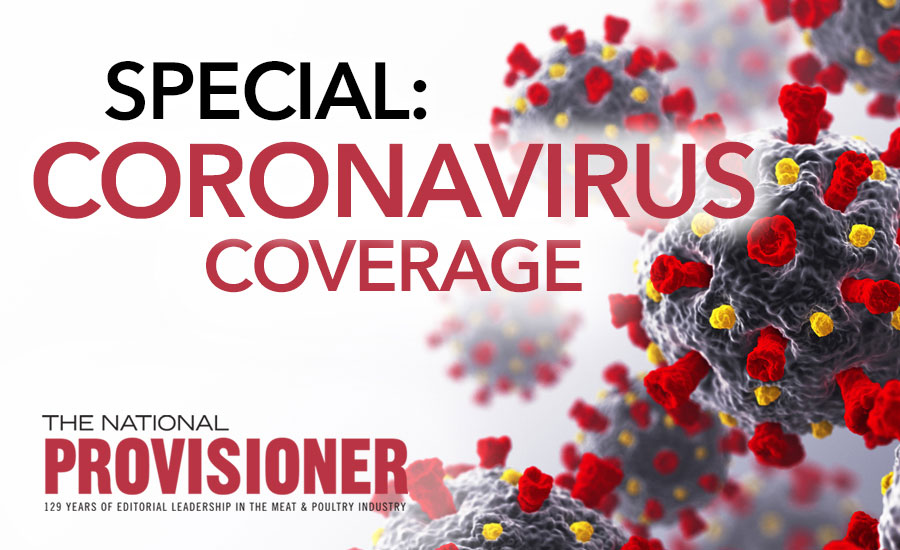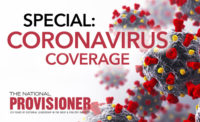Meat and poultry processing facilities are a component of the critical infrastructure within the Food and Agriculture Sector. CDC’s Critical Infrastructure Guidance advises that critical infrastructure workers may be permitted to continue work following potential exposure to COVID-19, provided they remain asymptomatic and additional precautions are implemented to protect them and the community. All meat and poultry processing facilities developing plans for continuing operations in the setting of COVID-19 occurring among workers or in the surrounding community should (1) work directly with appropriate state and local public health officials and occupational safety and health professionals; (2) incorporate relevant aspects of CDC guidance, including but not limited to this document and the CDC’s Critical Infrastructure Guidance; and (3) incorporate guidance from other authoritative sources or regulatory bodies as needed.
Multiple outbreaks of COVID-19 among meat and poultry processing facility workers have occurred in the United States recently. The document provides guidance for meat and poultry processing workers and employers—including those involved in beef, pork, and poultry operations.
The full document is available at: https://www.cdc.gov/coronavirus/2019-ncov/community/organizations/meat-poultry-processing-workers-employers.html.
Exposure risk among meat and poultry processing workers
Workers involved in meat and poultry processing are not exposed to SARS-CoV-2 through the meat products they handle. However, their work environments—processing lines and other areas in busy plants where they have close contact with coworkers and supervisors—may contribute substantially to their potential exposures. The risk of occupational transmission of SARS-CoV-2 depends on several factors. Some of these factors are described in the U.S. Department of Labor and U.S. Department of and Health and Human Services’ booklet Guidance on Preparing Workplaces for COVID-19. Distinctive factors that affect workers’ risk for exposure to SARS-CoV-2 in meat and poultry processing workplaces include:
- Distance between workers – meat and poultry processing workers often work close to one another on processing lines. Workers may also be near one another at other times, such as when clocking in or out, during breaks, or in locker/changing rooms.
- Duration of contact – meat and poultry processing workers often have prolonged closeness to coworkers (e.g., for 10-12 hours per shift). Continued contact with potentially infectious individuals increases the risk of SARS-CoV-2 transmission.
- Type of contact – meat and poultry processing workers may be exposed to the infectious virus through respiratory droplets in the air – for example, when workers in the plant who have the virus cough or sneeze. It is also possible that exposure could occur from contact with contaminated surfaces or objects, such as tools, workstations, or break room tables. Shared spaces such as break rooms, locker rooms, and entrances/exits to the facility may contribute to their risk.
-
Other distinctive factors that may increase risk among these workers include:
- A common practice at some workplaces of sharing transportation such as ride-share vans or shuttle vehicles, car-pools, and public transportation
- Frequent contact with fellow workers in community settings in areas where there is ongoing community transmission.
Create a COVID-19 assessment and control plan
A qualified workplace coordinator should be identified who will be responsible for COVID-19 assessment and control planning. All workers in the facility should know how to contact the identified coordinator with any COVID-19 concerns. Infection control and occupational safety and health plans should apply to anyone entering or working in the plant (e.g., all facility workers, contractors, and others). Facility management should reach out to state and/or local public health officials and occupational safety and health professionals and establish ongoing communications to make sure they are getting relevant and up-to-date information concerning COVID-19. The workplace coordinators and management should also be aware of and follow all applicable federal regulations and public health agency guidelines. Worksite assessments to identify COVID-19 risks and prevention strategies should be done periodically as part of sound occupational health and public health practice. As part of these assessments, facilities should consider the appropriate role for testing and workplace contact tracing (identifying person-to-person spread) of COVID-19-positive workers in a worksite risk assessment, following available CDC guidance.
“We appreciate the administration’s new guidance in an effort to further keep our workers safe and keep food on the shelves,” said National Chicken Council President Mike Brown. “The biggest challenge we are experiencing is inconsistencies among state and local health departments and government officials who, in many circumstances, are developing their own criteria for maintaining operations with little or no consideration to previously-issued guidance which adds to confusion and can lead to unnecessary shutdowns. This patchwork approach is posing grave risk to the supply chain and threatening great disruption to NCC member companies. There must be a uniform approach across all states. NCC is urging states to immediately adopt CDC, OSHA and USDA guidelines. When considering human health and food supply issues, time is of the essence.”
Source: CDC (https://www.cdc.gov/coronavirus/2019-ncov/community/organizations/meat-poultry-processing-workers-employers.html), NCC



Report Abusive Comment